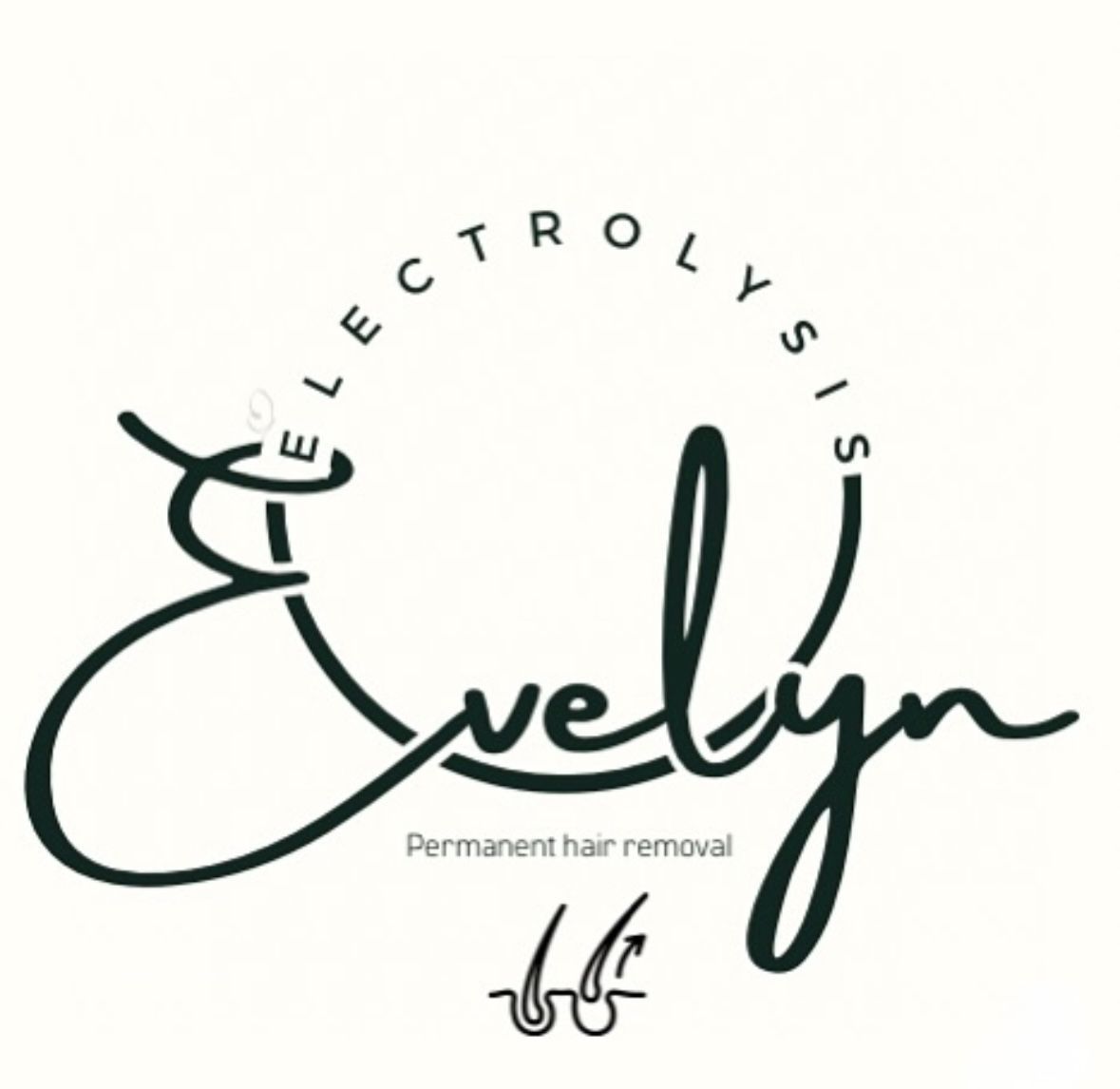Electrolysis FAQ
Discover why by learning..
-
What is electrolysis?
Electrolysis was first discovered in 1875 by an ophthalmologist named Dr. Charles Michel. Electrolysis is a highly targeted hair removal treatment unlike any other, as it treats hair individually, one at a time, regardless of the hair or skin color. Electrolysis is the only Food and Drug Administration (FDA) approved form of permanent removal of unwanted hair from the body by destroying the hair root by a use of small electric current.
-
How does electrolysis work?
Electrolysis works by treating one hair at a time, utilizing a small/minute amount of electric current to destroy the growth center of hair at the base of the follicle. Depending on the modality used, the electric current that is applied from the epilator device creates heat and/or a chemical reaction to destroy the hair follicles ability to produce future hair regrowth with consistent electrolysis treatments.
A very fine, pre-packaged, pre-sterilized, disposable metal probe manufactured by Ballet, is used for individual electrolysis treatment. I first perform hand hygiene before every electrolysis treatment and wear medical grade nitrile disposable gloves for each treatment. The treatment area is examined using a magnifying lit glass to assess skin and hair; to determine probe size and treatment settings. The skin is then cleansed with 70% isopropyl rubbing alcohol prior to beginning treatment. During electrolysis, with my gloved hands, the skin is gently stretched taut in the direction of hair growth; the probe is inserted into the individual unwanted hair follicle; (electrolysis is performed one hair at a time). The epilator footswitch is then stepped on, which delivers a programmed small/minute electric current into the base of the hair follicle, where the unwanted hair is treated and then released. Depending on the modality used, once the foot switch is depressed, electrocoagulation (heat from the electric current mixed with moisture within the follicle) or a chemical reaction (lye) destroy the blood supply at the base of the hair root/growth center of the hair. Lastly, forceps (tweezers) are used to release and grasp the hair as it slides out of the follicle; detached from its blood supply/growth center.
This process known as electrolysis, is completed for each unwanted hair, one hair at a time, until the area is cleared. Electrolysis requires consistent follow up treatment sessions and time commitment to achieve optimal results of permanent hair removal, as hairs need to be treated a number of times in the hair growth cycle to weaken and eliminate future hair growth. Over time, the follicles fill with scar tissue (invisible to the naked eye) and hair growth will not occur.
-
What are the 3 modalities of electrolysis?
- Galvanic: is the original founding method of electrolysis in 1875 by Dr. Charles Michel, using direct current (DC). Galvanic electrolysis causes a chemical reaction to occur, creating lye; also known as sodium hydroxide (NaOH) in the hair follicle destroying the germination cells. Lye destroys the cells in the bottom regions of the hair follicle--the papilla, the hair growth center.
- Thermolysis: is the most commonly used form of electrolysis. It uses alternating current (AC)/high-frequency (HF) current. When the probe is inserted into the hair follicle, the skin's moisture content with the electric current produces heat, which causes electrocoagulation to occur. This destroys the hairs growth cells in the follicle.
- Blend: is a combination modality of thermolysis alternating current and galvanic direct current to destroy hair growth by heating up the chemical lye process to destroy the growth center of hair.
-
Does electrolysis hurt?
Pain is subjective-- everyone feels and perceives pain differently!
Electrolysis has been described as a warm, tingly, sting, or prickly pinch. For females, electrolysis may be more sensitive and reactive right before or during one's menstrual cycle.
Electrolysis has also been described very similarity to feeling what other hair removal/reduction methods like laser, threading, and waxing cause.
Tips for improving one's comfort during electrolysis:
- Stay hydrated, drink plenty of water before & after
- Apply an over the counter (OTC) numbing cream or a stronger/prescribed numbing cream minimally 30 minutes prior to treatment, covered with a piece of Saran Wrap.
- Take an over the counter (OTC) pain reliever 1 hour prior to treatment, if not contraindicated
- Apply ice before and/or after for pain relief and to decrease swelling and redness after treatment
- Verbalize if a break is needed during treatment
- Wear comfortable clothes
- Continue following after care recommendation applying witch hazel and Aloe Vera to soothe and protect treated area
-
What is the normal hair growth cycle?
All hair on the body will grow, mature, and shed. All hair, regardless of the body area, have a growth cycle consisting of the 3 stages below; however, the length of the growth cycle differs for different regions of hair. Eyebrows and eyelashes have the quickest, shortest growth cycle, approximately 4-8 weeks, upper lip 16 weeks, chin 1 year, whereas scalp hair has the longest growth cycle, lasting 2-6 years.
There are three stages of the hair growth cycle:
- Anagen: The active growth period of hair when the hair follicle is at its deepest. Here, synthesis/growth of hair takes place. Hair spends the longest amount of time in this stage, about 85% of time in this stage of growth.
- Catagen: The transition phase of hair growth, which is about 10% of time spent in this stage. Here, hair begins to shed. The bulb separates/detaches from the papilla and begins to rise up the follicle. The lower part of the follicle shrivels up and the papilla goes into a dormant stage.
- Telogen: The rest period for the follicle, only lasts about 5% of time in this stage. The hair has fallen out and the follicle is at rest.
Electrolysis is best to treat hair in the early anagen stage of hair growth. This is when the hair growth is first visible and the hair is at it's weakest point in this stage.
-
What causes excessive, unwanted hair growth?
- Heredity & Genetics
- Stress
- Certain medications: glucocorticoids (steroid hormones), anti-convulsants (seizure preventive medications), neuroleptics (anti-psychotics), hormone replacement (certain birth control or testosterone)
- Hormonal and/or glandular imbalances: Polycystic Ovary Syndrome (PCOS), thyroid disorder, diabetes
- Life changing events like puberty, pregnancy, menopause
- Excessive tweezing/plucking
- Excessive waxing
-
How many electrolysis treatments are needed?
Since many factors influence hair growth, electrolysis requires consistent treatments and time commitment. The total number of treatments needed for permanent hair removal varies from person to person. Everyone is unique in the timing of their hair growth cycle, hair characteristics, and underlying cause of unwanted hair growth, which is why electrolysis responds individually to all.
Different body areas have different hair density and types of hair growth (vellus/fine hair vs. terminal/coarse hair). Hair density is the number of individual strands of hair per square inch on a given area of hair growth--usually hormonally driven hair growth requires more timing/treatment, as opposed to thinner, fine/vellus hair, which are weaker and shallower in growth and result in shorter/quicker treatments, as there is no relation to hormones.
Hair shape (flat/straight, wavy, curly, distorted, and ingrown) all play a role in electrolysis modality and treatment settings.
The timing and pricing for one client, may differ from what your needs may be for all the above unique factors. A general rule of thumb is that most clients (again, everyone is different and responds differently and depends on area of treatment) see results/decreased hair growth approximately within 6 months os starting electrolysis and clearance at about 1 year.
-
What are the side effects of electrolysis?
There are no major side effects with electrolysis.
Immediately after electrolysis mild redness and swelling may occur for 1-3 hours afterwards. Ice and an over the counter (OTC) nonsteroidal anti-inflammatory drug (NSAID) if not contraindicated, such as Ibuprofen (Advil or Motrin) or Naproxen (Aleve) may help reduce pain/discomfort, swelling, and redness after treatment. Consult with your medical provider if you have any questions
Minor scabbing or small white heads may occur after electrolysis for some people in certain areas.
It is most important to be diligent in following electrolysis before and after care recommendations.
-
How do I get started with electrolysis?
- Do your research: learn about electrolysis and if it's right for you
- Consult with your medical provider if needed or if you have any questions or concerns
- Allow unwanted facial or body hair to grow in, approximately 1/16 inch prior to treatment ("stubble" length)
- Discontinue use of Retinoids 1 week before electrolysis and Accutane minimally 6 months before starting electrolysis
- Schedule ahead, make consistent appointments
- Drink water to hydrate priort to and after treatment, minimize caffeine intake prior to treatment
-
What is electrolysis before care?
Before electrolysis--it is most important to educate yourself, ask questions, and consult with your doctor if needed.
- Stay hydrated, drink water and avoid caffeine right before your electrolysis treatment. Well hydrated skin can help make electrolysis treatment more comfortable for you, as moisutre in the follicle is a conductor for the electric current that is used with electrolysis
- Come to your treatment with hair growth present, at least 1/16 of an inch of hair growth is needed to assess the hair characteristics and direction of growth for treatment.
- Stop any actives/retinols 1 week prior to electrolysis.
- Practice good hygiene--arrive to electrolysis with clean skin, no moisturizer or make up to treatment area, and no deodorant if treating underarms.
- Avoid direct sun exposure 1-2 days prior.
- Consult with your medical provider if you have any conditions that affect your heart, blood, or skin
-
What is electrolysis after care?
After electrolysis care/post-treatment presents with minor redness and swelling, which is a natural and normal response that usually subsides within 1-3 hours.
General healing takes 2-3 days after treatment. Mild scabbing may occur and is also a normal reaction, depending on one's tolerance to electrolysis and sensitivity to treated area, especially in the initial stages of beginning electrolysis. Fine scabs can develop from the dry blood cauterized at the follicle base rising up through to the top of the follicle. Do not pick these, you may apply an over the counter (OTC) remedy like bacitracin or neosporin as a protective and healing base.
It is important to continue hydrating and to apply Aloe Vera or witch hazel to the treated area and avoid touching or rubbing the treated area with unwashed hands. For 24 hours after treatment fo not apply moisturizer or make up, deodorant, do not use alcohol based products, no facials/saunas, avoid working out/excessive sweating, and avoid direct sunlight.
Avoid tweezing/plucking or waxing unwanted hair in between electrolysis treatments , as these temporary removal methods promote hair growth. Most people don't know that plucking/tweezing, waxing, or threading causes hair growth because when the hair is forcefully removed by such temporary methods of hair removal, the body sends signals/hormones to respond to the area of injury to promote healing, which in turn stimulates more hair growth. If hair removal is needed in between electrolysis treatments, it is best to trim or shave the hair, as this does not injury the follicle base/promote hair growth.
Treatment Areas
Electrolysis is safe and effective on all types and colors of hairs & skin and for everyone (teens and older)!
If you have unwanted hair and are younger than 18, parent/guardian presence is required at initial visit and must give permission..
Consult with your medical provider if you have any conditions that affect your heart, blood, or skin.
Electrolysis treatment areas at Electrolysis by Evelyn include:
- Eyebrows
- Nose (external only/bridge of nose)
- Lips
- Chin
- Sideburns
- Facial ”Peach fuzz”
- Hair line
- Neck
- Ears (external ear lobe or tragus)
- Nape
- Breasts/Nipples
- Abdomen
- Underarms
- Arms
- Hands
- Fingers
- Feet
- Toes
- Also, safe for removal of unwanted hair on tattoos on above areas
Rates
Electrolysis treatments must be scheduled, and are by appointment only.
Call/text me, Evelyn— (203) 641-3526
Initial consultation is complimentary!
Appointments are booked by time:
15 minutes= $50
30 minutes= $80
45 minutes= $100
1 hour= $125
1.5 hours= $210
Cancellation or rescheduling must be done 24 hours in advance. Same day cancellation/rescheduling will acquire 50% fee and no show will acquire 100% fee due at next booking to proceed with electrolysis treatments.



